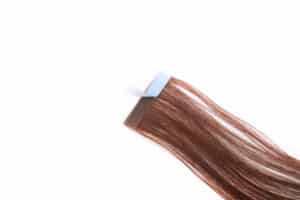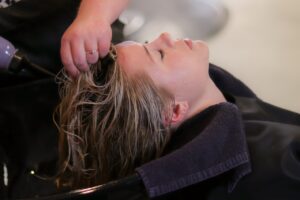Our website is supported by our users. This site contains affiliate links. If you click such a link and make a purchase, we may earn a commission for our endorsement, recommendation, testimonial, and/or link to any products or services from this website. Contact us for Questions

What is the Best Hair Extensions Method? Discover the Top Techniques
What is the Best Hair Extensions Method? Discover the Pros and Cons of the Top Techniques
When searching for the best hair extensions, several factors come into play. The biggies are budget, hair type, and preference.
It’s important to understand the different hair extension methods available and to find the one that suits your needs best. This article will cover popular methods and help you navigate the world of hair extensions.
Hair extension methods can be divided into two main categories: strand-by-strand and wefted panels. These methods differ in terms of attachment techniques and how the hair is integrated into your natural hair.
Strand-by-strand extensions, such as fusion and tape-ins, can be used on various hair textures and provide a seamless blend. On the other hand, wefted panels, like weaves, are often ideal for specific hair types, giving you more versatility in style and length.
Remy hair is considered the gold standard for extensions. It maintains a healthy, virgin, unprocessed condition and ensures the cuticle remains intact. By using Remy hair, you’ll achieve a soft and silky finish that looks and feels like your natural hair.
Types of Hair Extensions
Clip-In Extensions
Clip-in extensions are popular for those who want a quick and temporary option to achieve extra length and volume. They come in various styles, such as bangs, ponytails, and buns.
Made up of multiple wefts, these extensions range from two to four clips, allowing you to customize your look effortlessly. To install, simply clip them onto your desired areas.
Because of their low commitment factor and ease of use, clip-in extensions are ideal for beginners.
Tape-In Extensions
Tape-in extensions are a more low-maintenance salon option. Applied via adhesive strips, these wide, flat sections of human hair blend seamlessly into your natural locks and can last for about 6-8 weeks.
They offer speedier application and removal compared to other extension methods. Keep in mind, however, that you may need professional help to apply and remove them.
Sew-In Extensions
Sew-in extensions, also known as weaves, are applied by sewing the hair weft onto tightly-woven braids made from your natural hair. This method is commonly used among those with coarser hair types that can withstand the weight of the sewn-in hair.
Sew-in extensions can last up to three months, depending on the quality and how well you take care of them. Although they may require more maintenance compared to other methods, they offer a more natural feel than clip-ins and tape-ins.
Fusion Extensions
Fusion extensions involve attaching individual strands of hair to your natural locks using a keratin bonding agent. This method provides a natural look and more freedom when styling your hair.
Fusion extensions can last up to six months with proper care. However, they require a professional to put in and remove. This makes them a more expensive and time-consuming option.
Micro-Link Extensions
Micro-link extensions use small metal rings (sometimes called microbeads or micro-loops) to attach the extensions to your hair. They don’t rely on adhesives or heat, reducing potential damage to your hair.
Micro-link extensions can last for several months with proper care. But you’ll need to visit your stylist for adjustments as your hair grows. This method suits those who prefer a more semi-permanent option without glue or adhesives.
Material and Hair Quality
When choosing the best hair extension method, it’s essential to consider the quality of the hair used in the extensions. The most common materials used are human hair, synthetic hair, Remy hair, and virgin hair.
Human Hair
Human hair extensions offer a natural look and feel as they blend seamlessly with your own hair. They can be styled, colored, and treated like your own hair, giving you freedom and versatility.
Human hair extensions are also durable and can last for a long time with proper care. However, they can be more expensive compared to synthetic hair extensions.
Synthetic Hair
Synthetic hair extensions are typically made from artificial fibers that mimic the appearance of real hair. They are more affordable than human hair extensions but have some limitations.
Synthetic hair cannot be styled using heat tools, as high temperatures can easily damage the fibers. Additionally, synthetic hair doesn’t last as long as human hair extensions and may need to be replaced more frequently.
Remy Hair
Remy hair refers to human hair extensions in which the cuticle remains intact, and all cuticles align in the same direction. This ensures a soft, silky texture that resists tangling and shedding.
Remy hair is often considered to be the best type of hair for extensions since it’s healthy, virgin (never before processed) human hair. Each strand is carefully selected to ensure high quality, making Remy hair extensions a popular choice for a natural and long-lasting result.
Virgin Hair
Virgin hair is unprocessed human hair that has never been dyed, bleached, or chemically treated in any way. This type of hair is the highest quality available, as it maintains its natural texture and color. Virgin hair extensions are especially recommended for those seeking a truly natural-looking result. Keep in mind, though, that they do come with a higher price tag.
Selecting the Best Method
Considerations for Hair Type
When choosing the best hair extension method, first consider your hair type. Different methods work better for different hair textures, lengths, and volume. Here are a few suggestions:
- Fine to Medium Hair: Clip-in, tape-in, and micro loop extensions are suitable due to their lightweight nature and reduced stress on your hair.
- Thick or Curly Hair: Sew-in, weave, and hot fusion (keratin) extensions are ideal as they provide ample support and blend well.
Keep in mind your preferred texture and length, as this will also influence the method best suited for your needs.
Budget
The cost of hair extensions can vary greatly depending on the chosen method, so it’s important to establish your budget beforehand. Here are rough estimates for some popular methods:
- Clip-in hair extensions: $100 – $800
- Tape-in hair extensions: $200 – $1,000
- Micro loop/micro link extensions: $600 – $2,500
- Hot fusion (keratin) extensions: $600 – $3,000
- Sew-in/weave extensions: $150 – $1,200
Consider that some methods require regular maintenance, which can add to the overall cost. Look for a balance between quality and affordability that meets your preferences.
Maintenance
Some hair extension methods require more maintenance than others. Consider your lifestyle and how much time you’re willing to invest in upkeep when selecting the best method for you. Here’s a brief overview of the maintenance levels required for various methods:
- Clip-ins: Low maintenance. Simply remove, clean, and store when not in use. Requires occasional washing and brushing.
- Tape-ins: Medium maintenance. Requires professional reapplication every 4-8 weeks. It mainly depends on your hair growth and how well they are maintained.
- Micro loop/link: High maintenance. Requires professional tightening every 4-6 weeks to prevent slippage. Regular brushing and proper hair care are necessary.
- Hot fusion (keratin): High maintenance. Involves regular check-ups with a professional and proper hair care. Can last up to 4-6 months with proper maintenance.
- Sew-in/weave: Medium maintenance. Requires professional tightening or reapplication every 4-8 weeks. Like tape-ins, this depends on hair growth and type.
Keep your preferences and lifestyle in mind when selecting a method. This ensures long-lasting, natural-looking extensions that you can enjoy and manage.
Pros and Cons of Each Method
Pros and Cons of Clip-In Extensions
Pros:
- Easy to install and remove, allowing you to change your hairstyle frequently
- Minimal to no damage to your natural hair
- More affordable than other methods
- Ideal for special occasions or temporary wear
Cons:
- Less secure than other methods, meaning they may not stay in place as well
- May not blend seamlessly with your natural hair
- Can cause tension and discomfort if not installed properly
Pros and Cons of Tape-In Extensions
Pros:
- Seamless installation, making them less noticeable
- Less damaging to your natural hair than other methods
- Ideal for straight to slightly wavy hair
- Faster application and removal compared to other methods
Cons:
- Can cause itchiness or discomfort if the adhesive comes in contact with your scalp
- Not suitable for those with oily hair as it can cause the adhesive to lose its grip
- Limited styling options due to the placement of the tape
Pros and Cons of Sew-In Extensions
Pros:
- Secure and long-lasting, making them suitable for those who want a more permanent solution
- Works well with various hair types, including curly and thick hair
- Causes less tension on your natural hair as it is sewn into a braided base
Cons:
- Can lead to an itchy scalp if not properly maintained
- Your natural hair may experience stress and potential breakage due to the braiding process
- More time-consuming and expensive compared to other methods
Pros and Cons of Fusion Extensions
Pros:
- Provides a very natural look, as the extensions are fused with your natural hair
- Long-lasting and secure method
- Less likely to cause itching or discomfort
Cons:
- One of the most expensive and time-consuming application and removal processes
- Can cause damage to your natural hair due to the heat used during the application process
- Not suitable for those with thin or fine hair, as the fusion process can cause further hair loss due to the weight of the extensions
Pros and Cons of Micro-Link Extensions
Pros:
- No heat, glue, or chemicals used in the application process
- Provides a natural appearance due to the small, discrete links
- Can be easily adjusted, allowing for more control over the tightness and tension
Cons:
- Can be uncomfortable
- If not properly installed, the links can cause hair breakage and tension on your natural hair
- Requires regular maintenance and readjustments, which can be time-consuming
Popular Brands and Celebrities
When it comes to hair extensions, several brands stand out as favorites among celebrities and their stylists. Let’s look at some popular brands and the celebrities that love them.
Bellami Hair is known for its natural-looking extensions. In fact, many stylists work with this brand due to its high-quality clip-ins. A favorite among celebrities, Bellami’s range of extensions is perfect for achieving that red-carpet look.
Glam Seamless is another excellent option. This brand offers tape-in hair extensions that are lightweight on the scalp and provide a smooth, silky appearance. Celebrity hairstylists often turn to these extensions for their clients because they can be reused up to three times while maintaining their quality.
Indique Hair offers a variety of hair extension methods to choose from. It’s become a go-to option for celebrities and their hairstylists. Indique is noted for its versatility and selection, ensuring a suitable option for any hair type or desired look.
Great Lengths is another brand that has become popular among celebrity hairstylists and for a good reason. These extensions are known for their quality, durability, and natural appearance. With a wide range of colors and lengths available, it’s no surprise that celebrities turn to Great Lengths for a customized look.
When it comes to celebrities who love wearing hair extensions, the list is extensive. Here are just a few examples:
- Paris Hilton uses KmXtend Hair’s keratin tip extensions. The brand offers 100 percent human hair in various colors, styles, and lengths, making it an ideal choice for this style icon.
- Jennifer Lopez has been spotted wearing Glam Seamless hair extensions. This is a testament to the brand’s quality and preferred status among celebrity hairstylists.
- Kylie Jenner regularly sports hair extensions from Bellami Hair. This has further solidified the brand’s reputation as a favorite among A-list celebrities.
Installation and Maintenance Tips
Here are some tips when it comes to installing and maintaining your extensions.
Color Match
To achieve the best color match, consult with a professional colorist. They can help you choose the right shade, whether you are looking for highlights, balayage, or an all-over color.
Installation
Professional installation is crucial for a secure, comfortable, and natural-looking fit. There are various hair extension methods, such as tape-ins, hand-tied, and micro-link extensions. Consider the following for each method:
- Tape-ins: These extensions are sandwiched between your real hair using thin tape wefts. Installation time can range from 45 minutes to 2 hours, depending on hair density. Tape-ins work well for straight to wavy hair types, offering natural-looking results.
- Hand-tied: These are recommended for straight-to-wavy hair textures. Hand-tied extensions use beads that lay flat against your scalp. Detangling can be done closer to the root, just below the beads.
- Micro-link: These extensions use small rings, also known as i-tips, to attach strands of extensions to your natural hair. It’s essential to avoid using circular motions when washing to prevent messing up the i-tips.
Maintenance
Proper care of your hair extensions is vital for longevity and keeping them looking great. Keep these tips in mind to maintain your extensions:
- Air or pre-dry your extensions before heat styling. Get your extensions 80 to 90 percent dry by air drying or using a blow dryer before using a round or flat brush to smooth them.
- To avoid damaging your extensions, consider using specific hairstyles, such as ponytails or updos. You can also explore options like wigs, hidden crowns, or wire-based extensions for added versatility and convenience.
- Regular visits to your hairstylist will help keep your extensions well-maintained and blended with your natural hair.
Following these tips will help you minimize damage and maximize the lifespan of your extensions.
Customization Options
You’ll also want to consider the customization options when choosing hair extensions. These options include shades, colors, materials, and unique effects like ombré. You can select the best extensions to match your style by understanding the different choices.
Shades and Colors
Hair extensions come in various shades and colors, allowing you to find the perfect match for your natural hair. Whether you prefer a classic and natural look, or you’re all about experimenting with bold colors, you’ll discover numerous options, including:
- A wide range of natural shades, from jet black to platinum blonde.
- Unique colors such as pastel hues or vivid tones like reds and purples.
Materials
The material used for hair extensions is another significant factor to consider. There are two main types to choose from:
- Synthetic hair: More affordable and available in a variety of colors and styles but less durable than human hair extensions.
- 100% human hair: Higher quality, natural-looking, and longer-lasting, but more expensive than synthetic hair.
Ombré Effects
Ombré extensions offer a stunning gradient effect while blending seamlessly with your natural hair. Ombré extensions often feature a darker root that gradually transitions to lighter ends. This adds dimension and creates a more vibrant appearance.
As you explore the various customization options for hair extensions, remember to take your time and consider your specific needs, preferences, and personal style. By finding the perfect match, you can enhance your look and feel confident with your choice of extensions.







